Continuous cover forestry
Ian Barton, New Zealand Tree Grower May 2009.
Continuous cover forestry is the management of forests using ecological principles which are patterned on natural processes so that the forest canopy is always maintained at one or more levels and the forest will largely self regenerate. Harvest removals will be undertaken as single tree or small coupe fellings so that biodiversity, soil and water values and the landscape are not compromised.
Objectives and principles
Sustainability is at the heart of continuous cover forestry. The ability to maintain the forest canopy and protect, to a much greater extent than with clear felling, the ecology and biodiversity of the site means that continuous cover forestry is a system which is almost ecologically sustainable.
The main objective is to maximise the forest benefits while letting natural processes do as much work as possible, basing the whole process on the ecology of the natural forest. This means that natural regeneration is preferred to planting and single tree or small coupe felling preferable to clear felling. Unproductive thinning is minimised, there should be no aged – based rotation and species natural to the site are preferred.
The five main principles are −
- Adapt the forest to the site by working with the site and its inherent variations
- Adopt a holistic approach to forest management which should aim to create, maintain and enhance the functioning ecosystem.Values such as biodiversity, landscape protection, timber production and soil and water benefits are all important.
- Maintain forest conditions and avoid clear-felling. Retain the vertical structure of the forest because the plants in each layer are important parts of the eco-system. Low impact harvesting methods should be aimed at maintaining forest structure.
- Management of the growing stock by concentrating on the development of individual trees rather than stands or compartments
- For indigenous forest ensure a good understanding of the ecology of individual species and the forest types.
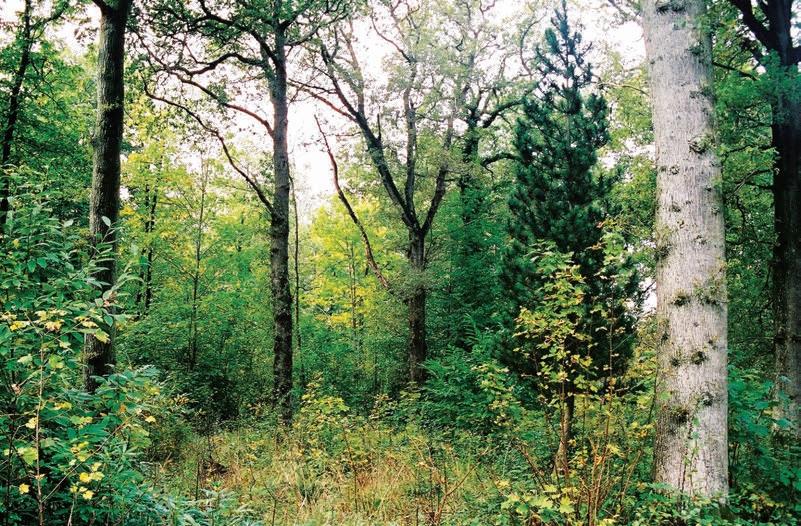
Planting a new forest
When establishing a new continuous cover forest on bare ground, four major aspects must be considered before any work is done −
- Site conditions such as soil moisture, light requirements, wind and temperature
- Forest composition with species located according to their individual needs and with nurse species required to ameliorate the growing environment
- Growth conditions including competition from weeds and adjacent trees, the presence or absence of essential mycorrhiza and nutrient levels of the soil
- Seedlings are often quite costly and may require close spacing, so use cheap filler plants which can also perform a nurse function as well as reducing cost.
| Provisional grouping of species by shade tolerance | |
|---|---|
| Light demanding species suitable only as dominant emergents | Radiata pine Pinus radiata |
| Light demanding but will grow as co-dominants in association with other species | Chinese fir Cunninghamia lanceolata Douglas fir Pseudotsuga menziesii Puriri Vitex lucens Red alder Alnus rubra Rimu Dacrydium cupressinum Tallowwood Eucalyptus microcorys Tanekaha Phyllocladus trichomanoides Totara Podocarpus totara |
| Intermediate species which tolerate shade as juveniles but generally require full light for maximum growth | Black beech Nothofagus solandri Eastern white pine Pinus strobus Japanese cedar Cryptomeria japonica Kahikatea Dacrycarpus dacrydioides Kauri Agathis australis Mexican cypress Cupressus lusitanica Ovens cypress x Chamaecyparis ovensii Red beech Nothofagus fusca Redwood Sequioa sempervirens |
| Shade tolerant but will grow in full light | Blackwood Acacia melanoxylon Gean Prunus avium Silver beech Nothofagus menziesii |
| Shade species which do not grow well in full light | Tawa Bielschmeidia tawa Western red cedar Thuya plicata |
It is necessary to have a good knowledge of the requirements of the species to be planted, in particular their shade tolerance and tolerance of other species. Species with potential for continuous cover forestry in New Zealand are listed in the table on the next page and grouped according to their light and shade tolerances as currently understood.
Conversion of an existing forest
Windthrow risk and site fertility are the two most important factors to consider when converting an area of forest land to continuous cover forestry. Unsuitable sites are characterised by a strong risk of windthrow and poor, shallow soils. Suitable sites are relatively sheltered and have deeper soils with moderate fertility.
Beginning the transformation
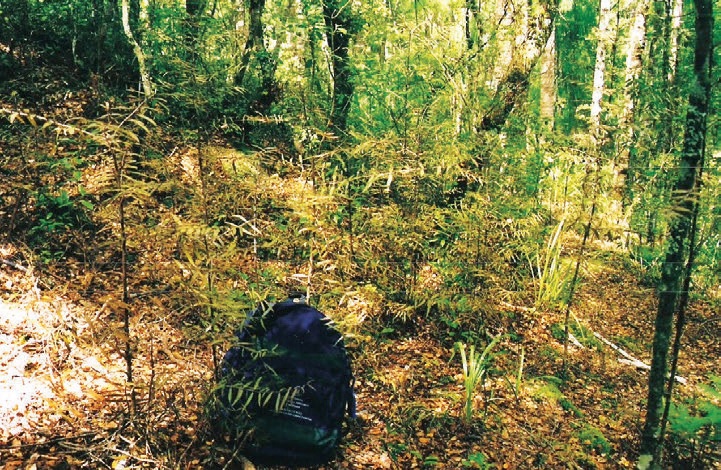
The course of action will depend upon the type of vegetation you have to work with.
For young, even-aged forest or scrubland there is already a vegetation cover of young, usually even-aged plants. For example this can be indigenous scrubland regenerating after clearance, exotic scrubland regenerating from grassland or cleared exotic forest, or a plantation of exotic species less than 10 years old.
For conversion of cut-over indigenous or under-stocked exotic forest an inventory is required because forest areas will be quite varied. It is likely that the area can be classified into different stand types −
- Stands of larger, mature and semi-mature trees
- Stands of advanced regeneration
- Stands with advanced seedling regeneration or where planting is desired
- Stands where desired regeneration is limited by factors which can be controlled such as the grubbing of ground ferns in a beech forest
- Stands containing tree ferns and woody shrubs with no potential commercial value.
In degenerate exotic forest regeneration is likely to be poor or non-existent and planting will be needed although suitable coppice regrowth can be used. Unless they are required as nurse trees to reduce potential wind damage or for animal habitat, the poor quality trees will need to be removed. Unproductive areas should be cleared sufficiently to allow for regeneration and the faster growth of any seedlings already established. Where regeneration does not occur the sites should be planted. Effective weed control is essential. In cut-over indigenous forest section IIIA of the Forests Act 1949 will apply.
Conversion of a mature, even aged plantation can be achieved by gradual thinning from above. The larger stems need to be removed to create a shelter wood until light conditions increase sufficiently to allow regeneration.The block can be divided into equal areas and one area felled every year or so. The trees should be replaced with an appropriate mixture of species for continuous cover forestry. This can be done by regeneration or by planting.
Production from a mixed indigenous forest reasonably stocked with mature trees can be carried out done by those wanting to manage their existing indigenous forest under section IIIA of the Forest Act 1949. The first requirement is for an inventory. Once this has been carried out the procedure is similar to the cut-over forest described above. The bulk of the stands should contain large mature trees, the next largest stand category is likely to be non productive area of tree ferns and woody shrubs. Stands of advanced regeneration and seedling regeneration will be less common.
Managing the continuous cover forest
Continuous cover forest management systems are patterned on natural forest processes, sometimes referred to as mimicking. Silvicultural work involves the speeding up of natural processes by the removal of some of the plants that are present, but not essential to the process, so that the desired species will grow faster. At any one time different parts of the forest will be at different stages so a number of silvicultural treatments may be undertaken simultaneously.
Inventory, yield control and monitoring
Inventory, yield control and monitoring are slightly different aspects of the whole programme of forest control. Systems can be designed to allow all three to be done using the same process.
Inventory is the basis of all continuous cover forest because the forest owner must know as much as possible about species, size classes, basal area, volume, recruitment, mortality and forest health.The forest should be surveyed every five to 10 years to collect data on growth of potential crop trees. This will help you maintain size classes at optimum levels, species distribution, free seedlings and saplings from suppression and remove defective stems. Monitoring is required to maintain forest values by ensuring the forest is not degraded by uncontrolled felling, is protected against fire, wind and disease, and so that noxious animals are controlled.
Silvicultural processes
Silviculture is based on the ecology of the forest. Silvicultural processes are not confined to certain parts but take place over all the forest. Harvesting will normally be by single tree or group selection, depending on the shade tolerance and seedling regeneration characteristics of the tree.
Felling will not always be confined to larger trees. Large dominants, the frame trees, are left to grow to their fullest potential while others may be left for habitat purposes. The main selection criteria should be to remove trees with impaired health and vigour or which are malformed or damaged. The timely harvest of dominant trees and eventually frame trees will allow sub-dominants to increase their growth rate once the over-storey is removed.
Following harvesting, growth at all levels in the forest must be encouraged. New tree establishment can be obtained by encouraging seedling germination and coppice regrowth. If this is not possible, planting will be required. Existing seedlings and saplings must be releasing from competition and excessive numbers thinned out. Repeat releasing will probably be needed.
Harvesting
The harvesting method will depend upon relative shade tolerance of the species concerned and can be individual tree selection, group selection or irregular shelterwood.The harvesting process should be used to develop greater structural diversity within the forest by encouraging the growth of better quality trees with good root stability, good form and vigour and appropriate spacing. When these trees emerge through the scrub canopy there should be 200 to 300 dominant and sub- dominant trees in each hectare for narrow crowned trees like kauri and totara, but fewer for those with spreading crowns.
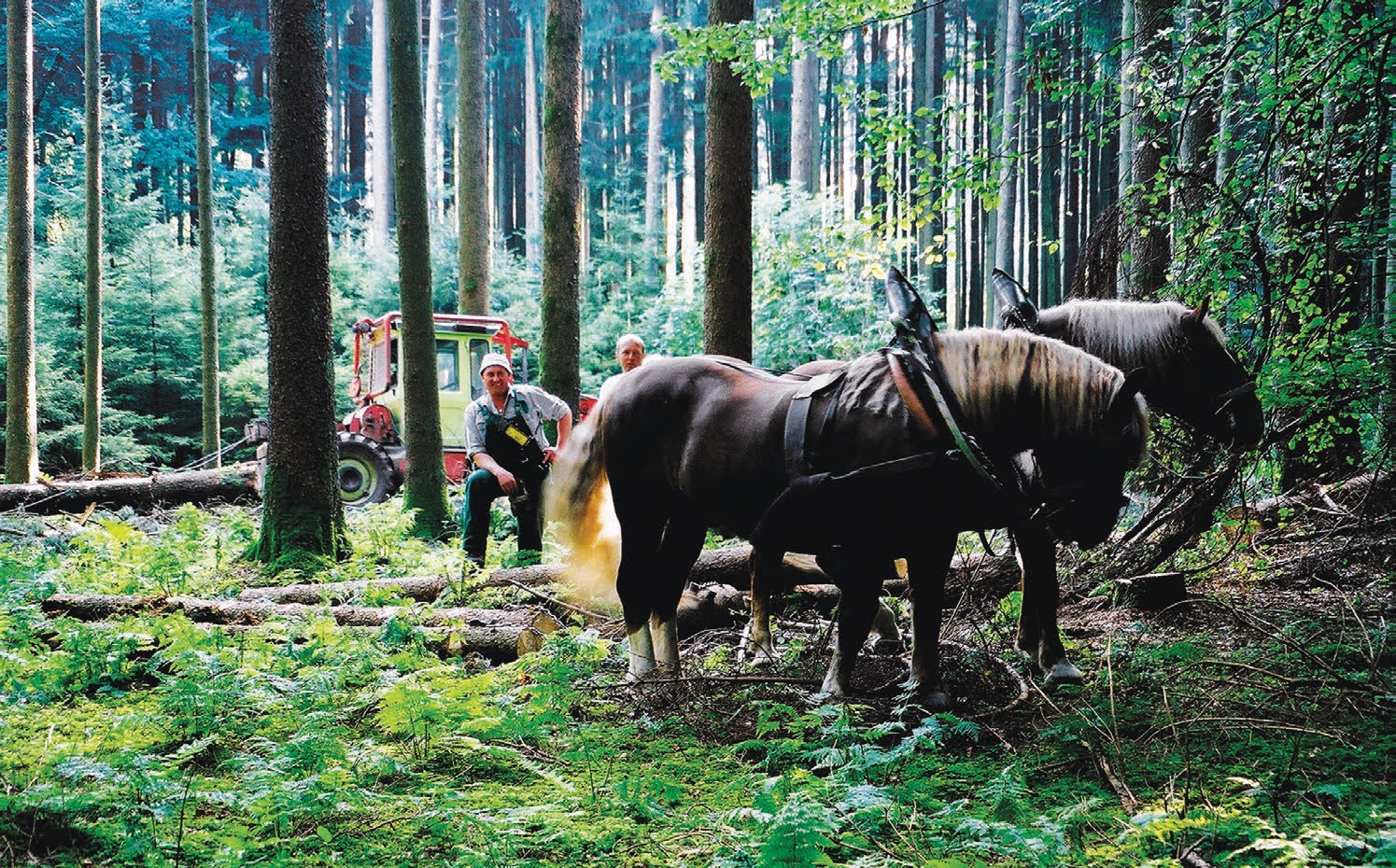
As the forest ages, natural regeneration will begin to colonise the under-storey. Thinning the canopy of nurse or non-crop species progressively opens up gaps to favour the more rapid growth of regenerating seedlings. Because of differing light levels within the stand, seedlings will have variable height growth, with more favoured trees growing more rapidly towards the canopy and so establishing the tiered canopy structure. Up to 50 years may be required to reach this point.
Choosing a system
When establishing a continuous cover forest, first try and determine which harvesting method might be used. You should try and include some combination of ground based, cable or aerial extraction by helicopter or balloon.
When choosing a harvesting system consider the following −
- Will harvesting be single tree, small group or coupe of specified size? The method chosen will mainly depend upon log size and the species being grown
- Steepness and remoteness of site
- Environmental considerations such as the potential for damage to soil and water values
- Relative damage caused to remaining trees and regeneration by the extraction method
- Combined with the above are the requirements of the Resource Management Act, more particularly the requirements of regional and district plans
- The extraction method, roading, skid track patterns and costs.
As a general rule for flat and rolling country up to 20 degree slope, skidder extraction is possible. On steeper country tracked machines can operate up to 35 degree slope. But if steeper than this aerial extraction, although more costly, is better. Helicopter extraction causes least damage to the forest because it minimises damage to other plants and the soil and greatly reduces the need for road construction. However timber values must be reasonably high to permit helicopters to operate economically. Ground harvesting is best undertaken when ground conditions are dry and when bark is tight which tends to restrict harvest operations to late summer, autumn and early winter in most parts of New Zealand.
The use of a portable mill on site should be considered because the technology of small, portable sawmills is now well advanced, with many of the modern mills able to cut very accurately and with more efficient log conversion than the old stationary mills. Portable mills are also well suited to cutting small volumes of mixed species which is the output of many continuous cover forests.
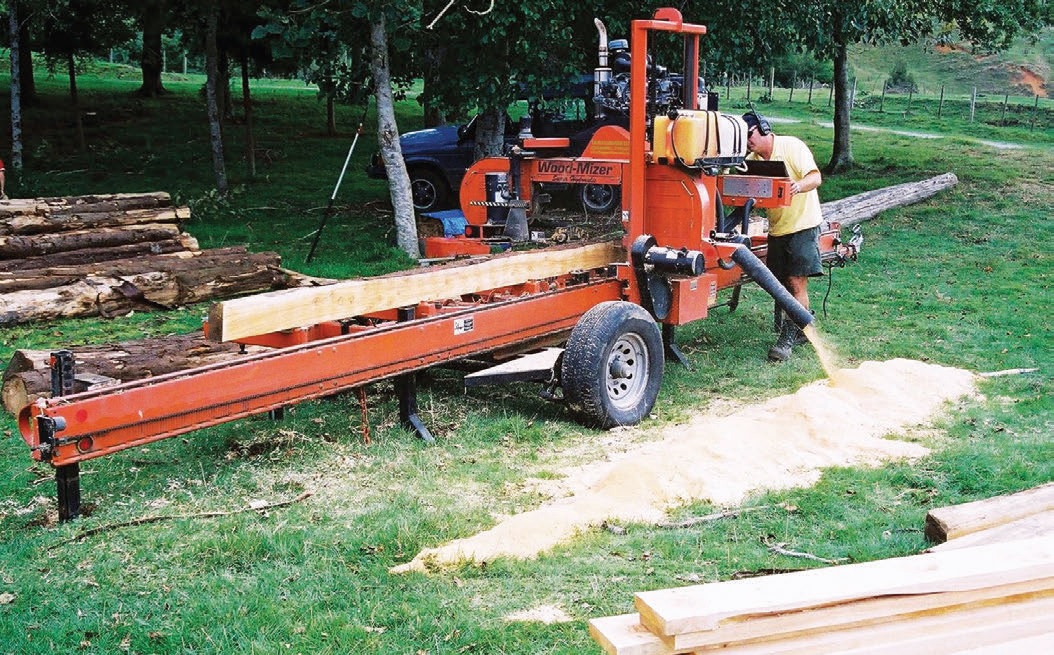
Management
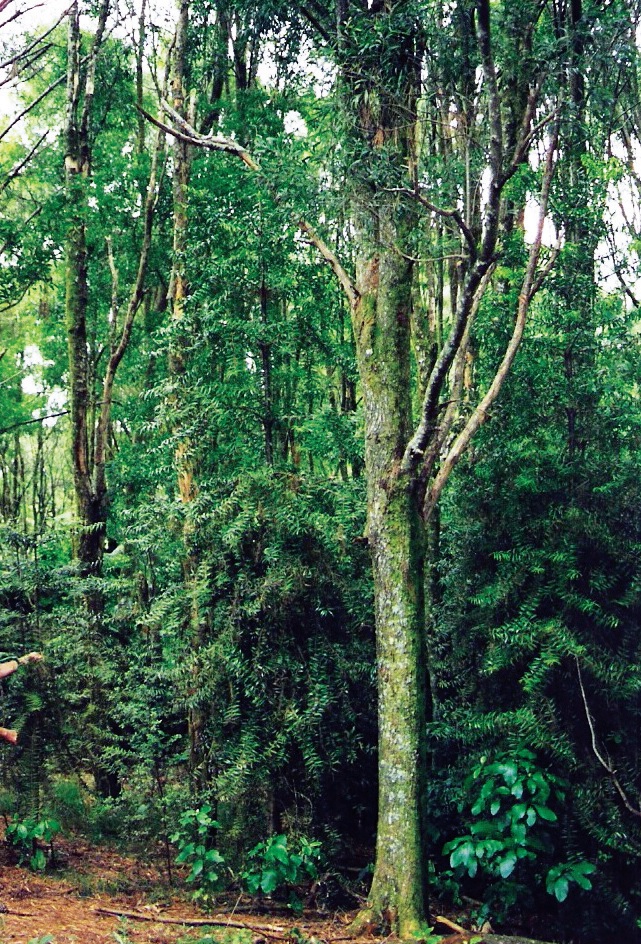
Economic considerations can no longer be the sole reason for forest management and continuous cover forestry, because its various social and environmental benefits may be more beneficial than clear-cut forestry. Management costs are higher for continuous cover forestry with a significant component of this being cost of inventory and harvesting. However savings can be made by the reduced cost of planting and silviculture.
Estate planning and management
Any forest owner wishing to practice continuous cover forestry must consider the ownership structure of the forest to ensure that a forest managed using continuous cover will continue long into the future.
Long range planning must extend far beyond the 10 to 30 year planning cycles common to most current forest planning. Forest owners need to understand that sustainable forests are measured in terms of centuries and not decades. Subscribing to the concepts of continuous cover forestry means being willing to forego some current income opportunities to create a lasting legacy for the future.
You need ownership appropriate to manage a forest with a life of in excess of 100 years minimum.The aim is to provide a mechanism which will ensure perpetuation of the forest rather than protect the rights of the owner. Processes to protect forests managed under continuous cover are available although still not perfect.They are a combination of trust or company, with the Forestry Rights Registration Act being currently the best option for European title land and Maori customary title for Maori land.
See Continuous cover forestry: A handbook for the management of New Zealand forests published by Tane’sTree Trust.

 Farm Forestry New Zealand
Farm Forestry New Zealand